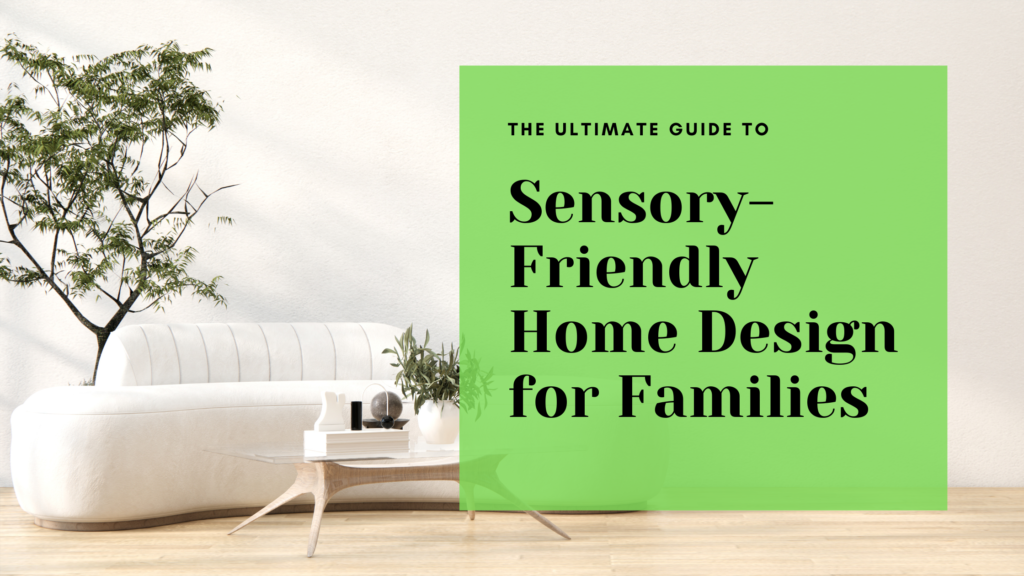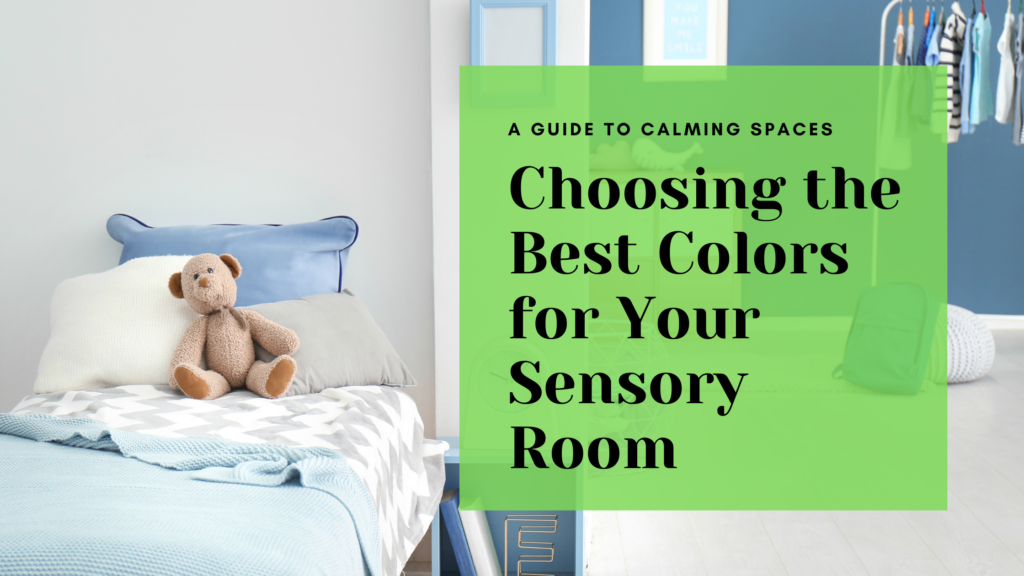I. Introduction
The Importance of Sensory Rooms for Children with Autism
Sensory rooms are specialized environments designed to help children with autism manage sensory processing issues. These rooms provide a safe, controlled space where children can engage with various sensory stimuli in a way that is calming and therapeutic. For children with autism, who often experience heightened sensitivity to sensory input, a sensory room can be a sanctuary that helps them reduce anxiety, manage sensory overload, and improve focus.
The benefits of having a sensory room at home are well-documented. A sensory-friendly space allows children to explore and interact with their environment in a way that is comfortable and tailored to their unique needs. These rooms can significantly improve a child’s emotional regulation and overall well-being, offering a reprieve from the often overwhelming sensory experiences of the outside world.
Why Innovation Matters in Sensory Room Design
While the basic principles of sensory rooms are well-established, innovation is key to creating a space that truly meets the individual needs of each child. No two children with autism are exactly alike; each has their own sensory preferences and triggers. This is why it’s essential to think creatively and customize the sensory room to cater specifically to the child using it.
Innovative sensory room ideas go beyond the traditional approaches, incorporating new technologies and designs that enhance the sensory experience. This article will serve as a guide to help parents and caregivers explore creative and effective ways to transform their home into a sensory-friendly haven for their child.
II. Key Elements of an Effective Sensory Room
Understanding Sensory Inputs
Sensory inputs are the stimuli that our senses perceive, including visual, auditory, tactile, olfactory, and vestibular inputs. For children with autism, these sensory inputs can often be overwhelming or, conversely, under-stimulating. A well-designed sensory room balances these inputs to create an environment that is neither too stimulating nor too dull, allowing the child to engage with their surroundings in a positive way.
For example, visual inputs might include dynamic lighting or interactive wall panels, while auditory inputs could involve soothing sounds or musical instruments. Tactile inputs might be provided through textured flooring or sensory toys, and vestibular inputs could be offered through sensory swings or balance boards. By carefully balancing these elements, you can create a sensory room that effectively meets the diverse needs of your child.
Personalizing the Sensory Experience
Personalization is crucial in sensory room design. Since each child with autism has unique sensory preferences, it’s important to tailor the room to those specific needs. Involving the child in the design process can also help ensure that the space is both comforting and engaging for them. This could include allowing the child to choose their favorite colors, textures, and sounds for the room.
Personalization not only makes the room more effective but also helps the child feel a sense of ownership and comfort in the space. This engagement can lead to better use of the room and greater benefits in terms of emotional and sensory regulation.
III. Innovative Sensory Room Ideas
Creating a Visual Wonderland
Dynamic Lighting Solutions: Lighting plays a critical role in creating the right atmosphere in a sensory room. Adjustable LED lights, fiber optic lights, and bubble tubes are excellent tools for creating a calming visual environment. LED lights can change colors and brightness levels, allowing you to adjust the room’s ambiance to suit the child’s mood or needs. Bubble tubes provide gentle visual stimulation with their slow-moving bubbles and soft glow, which can be both mesmerizing and soothing for children with autism.
Interactive Wall Panels: Interactive sensory wall panels are a great way to engage both the visual and tactile senses. These panels can include lights, mirrors, and various textures that invite children to touch, explore, and interact. For example, a wall panel might have a section with soft, glowing lights that respond to touch or textured tiles that provide a satisfying sensory experience.
Incorporating Calming Sounds
White Noise and Nature Sounds: Sound is another important element in a sensory room. White noise machines or apps that play nature sounds like ocean waves or bird songs can create a soothing auditory environment. These sounds help mask background noise and provide a consistent, calming auditory input that can help children with autism relax and focus.
Musical Instruments Corner: Setting up a corner of the room with soft musical instruments like xylophones, drums, or chimes provides an opportunity for auditory exploration. Music can be both stimulating and calming, depending on the child’s interaction with the instruments. This setup encourages creativity and sensory engagement in a controlled, enjoyable manner.
Enhancing Tactile Experiences
Tactile Paths and Flooring: Tactile stimulation is vital for many children with autism, and incorporating varied textures into the room’s flooring can enhance this sensory input. Tactile paths made from materials like soft rugs, foam mats, or textured tiles encourage exploration and physical interaction with the environment. These paths can guide the child through different sensory zones within the room, each offering a unique tactile experience.
Textured Furniture and Accessories: Bean bags, cuddle swings, and textured cushions are perfect for providing deep pressure stimulation, which many children with autism find calming. These items offer both comfort and sensory input, making them essential components of a well-rounded sensory room.
Engaging the Olfactory Sense
Aromatherapy Diffusers: Aromatherapy can play a significant role in creating a calming atmosphere in a sensory room. Diffusers with essential oils like lavender or chamomile can help soothe and relax the child, promoting a sense of calm and well-being. It’s important to choose oils that are safe and not too overpowering, as some children with autism may be sensitive to strong smells.
Scented Sensory Toys: Some sensory toys now come with subtle scents designed to provide gentle olfactory stimulation. These toys can be a great way to introduce new scents to the child in a controlled and enjoyable way, further enhancing the sensory experience.
Incorporating Movement and Balance
Sensory Swings and Hammocks: Movement is a key sensory input for many children with autism, and installing a sensory swing or hammock in the room can provide the necessary vestibular input. These swings help with balance and can be incredibly calming, offering a gentle rocking motion that soothes the nervous system.
Balance Boards and Rockers: Balance boards and rockers offer a more active form of sensory engagement. These tools help improve coordination and provide a fun way for children to engage in physical activity while also receiving sensory input. They can be particularly beneficial for children who seek out movement and physical stimulation.
Creating a Safe Space for Relaxation
Quiet Corners with Weighted Blankets: A designated quiet corner equipped with weighted blankets and soft pillows provides a retreat within the sensory room where the child can relax and decompress. Weighted blankets are known for their calming effect, offering deep pressure stimulation that can reduce anxiety and help the child feel more secure.
Tent or Canopy Retreats: Setting up a small tent or canopy within the room creates a secluded, cozy space where the child can retreat when they need to feel safe and enclosed. This setup can be particularly beneficial for children who need a space to escape from overwhelming stimuli.
IV. Practical Tips for Setting Up Your Sensory Room
Space Planning and Layout
When setting up a sensory room, thoughtful planning is essential. Organize the room to ensure a smooth flow between different sensory zones, making it easy for the child to move from one activity to another. Create distinct areas for various sensory inputs, such as a quiet corner for relaxation, a tactile zone with textured flooring, and a movement area with swings or balance boards.
The layout should be intuitive and accessible, allowing the child to engage with the sensory tools without feeling overwhelmed. Consider the room’s size and shape, and plan the placement of furniture and equipment accordingly to maximize space and functionality.
Safety Considerations
Safety is a top priority in any sensory room. Ensure that all equipment and furniture are securely installed and free from sharp edges or potential hazards. Child-proofing the room is essential, particularly if the child is prone to exploring and climbing. Anchoring heavy furniture to the walls, covering electrical outlets, and using non-toxic, durable materials are all critical steps in creating a safe environment.
Regularly check the room for wear and tear, especially if it includes items like swings or balance boards that may experience heavy use. Keeping the room safe ensures that the child can use it independently and without risk.
Adapting the Room Over Time
As the child grows and their sensory needs evolve, it’s important to regularly reassess and update the sensory room. This might involve changing the layout, adding new sensory tools, or rotating toys and equipment to keep the room engaging. Seasonal changes can also be incorporated, introducing new scents, colors, or textures to reflect the time of year.
Flexibility is key in sensory room design. What works well for a child at one stage of development may need adjustment later on, so staying attuned to the child’s changing preferences and needs will ensure the room remains effective and beneficial.
V. Conclusion
Recap of Innovative Sensory Room Ideas
Innovative sensory room ideas go beyond the basics, offering creative and effective ways to cater to the unique needs of children with autism. From dynamic lighting and interactive wall panels to soothing sounds, tactile paths, and aromatherapy, these ideas can transform a simple room into a sensory haven. Incorporating movement tools like swings and balance boards, as well as creating safe, quiet spaces, further enhances the room’s functionality and impact.
Encouragement to Start Creating Your Sensory-Friendly Space
Creating a sensory-friendly space at home is a meaningful way to support your child’s sensory needs and overall well-being. With careful planning and a focus on innovation, you can design a room that not only calms and soothes but also engages and inspires. The benefits of such a space are profound, offering a place where your child can feel safe, secure, and in control of their sensory environment.
If you’re ready to start creating your sensory room, explore the ideas and resources provided in this article. Share your sensory room creations with others in the community, seek professional advice if needed, and continue to adapt and innovate to meet your child’s evolving needs. A well-designed sensory room can make a world of difference in your child’s life, providing them with the tools they need to thrive.


